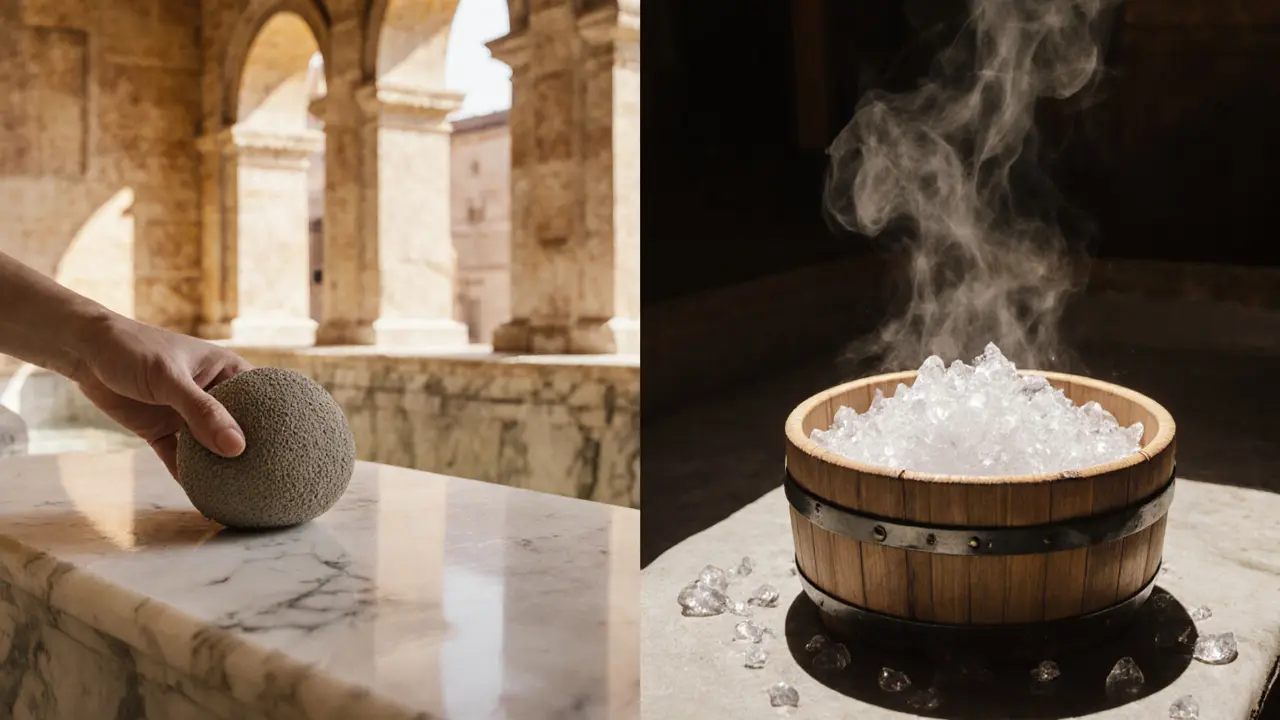Scrubber Guide: Your Complete Resource for Body Scrubs and Dry Brushing
When you hear the term scrubber guide, a collection of practical advice on exfoliating the skin using various tools and techniques. Also known as exfoliation handbook, it helps you decide whether a body scrub, a granular product that sloughs off dead skin cells or dry brushing, a dry, bristled brush used before showering to stimulate circulation fits your routine best. Exfoliation, the broader process of removing dead skin to reveal fresher layers ties them together, making the guide a go‑to reference for fresh, healthy skin.
Why Exfoliation Matters
Exfoliation isn’t just about looking smooth; it actually improves skin texture, helps moisturizers absorb better, and can even boost circulation. A good body scrub works by physically dislodging dead cells with fine grains like sugar, salt, or coffee. Those grains act as tiny erasers, and the added oils keep the skin from feeling stripped. The process also triggers cell turnover, so you notice a brighter complexion after a few sessions. In spa settings, professionals often combine a scrub with a massage to enhance lymphatic flow, turning a simple treatment into a mini‑detox.
Dry brushing, on the other hand, relies on a stiff brush to lift the outer skin layer without water or products. The bristles stimulate nerve endings, which can improve blood flow and even promote a mild lymphatic drainage. Many users report a feeling of “wake‑up” after a quick brush‑down, especially when followed by a warm shower. Because it’s done on dry skin, you can use it anywhere—at home, before a workout, or even on a quick break at work. The key is to use gentle, circular motions and to avoid harsh pressure that could irritate sensitive areas.
Choosing between a scrub and dry brushing isn’t an all‑or‑nothing decision. In fact, many skin‑care enthusiasts alternate them: a dry brush in the morning to energize the skin, and a body scrub in the evening to cleanse and soften. Frequency matters too—most experts recommend a scrub 1‑2 times a week and dry brushing up to three times a week, depending on your skin type. Over‑exfoliating can lead to redness or barrier damage, so listen to how your skin reacts.
Product selection plays a huge role. Look for scrubs that list natural exfoliants (like sugar or sea salt) and avoid those with excessive fragrance or harsh microbeads, which are now banned in many places due to environmental concerns. If you prefer a milder approach, opt for enzymatic scrubs that use fruit enzymes to dissolve dead cells without abrasive particles. For dry brushing, choose a brush with natural, medium‑stiff bristles and a comfortable handle. The brush should feel firm but not painfully sharp—this ensures effective stimulation without micro‑tears.
Understanding your skin’s needs is essential. Oily or combination skins often benefit from a salt‑based scrub that can help balance excess sebum. Dry or sensitive skins do better with sugar scrubs or gentle dry brushes, as they’re less likely to cause irritation. If you’re dealing with acne, avoid aggressive scrubs and opt for a soft brush or a chemical exfoliant with salicylic acid, but always patch‑test first. Pregnant women and those with certain skin conditions (like eczema or rosacea) should consult a dermatologist before starting any new exfoliation routine.
All this information sets the stage for the articles you’ll find below. Whether you’re curious about the science behind dry brushing, need a step‑by‑step body scrub recipe, or want to compare at‑home versus spa treatments, the collection offers clear, actionable insights. Dive in to discover the best practices, safety tips, and product recommendations that will help you master the art of exfoliation and keep your skin glowing all year round.
Discover the best body scrubber for your skin. This guide explains types, benefits, safety tips, and step‑by‑step usage so you can choose the perfect exfoliator.

